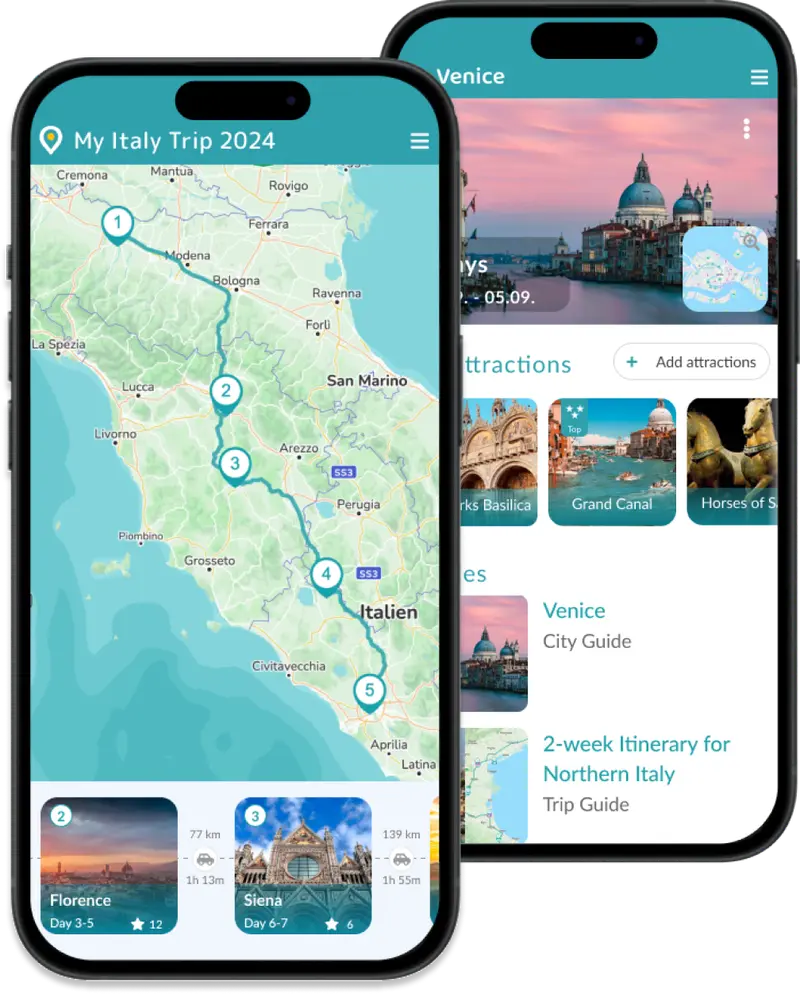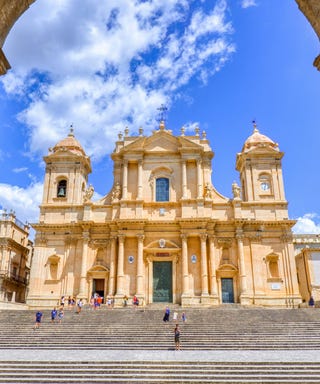Welcome to Catania, a lively city on Sicily's east coast, nestled under the shadow of Mount Etna, Europe's most formidable volcano. Sicily's second-largest city surprises visitors with its industrial, gritty vibes and youthful energy. Its allure lies in its energetic street life - especially at night - and unique baroque architecture, featuring lava stone. One of the best things to do is go from wine bar to wine bar, enjoy the Sicilian food and discover unexpected street art corners.
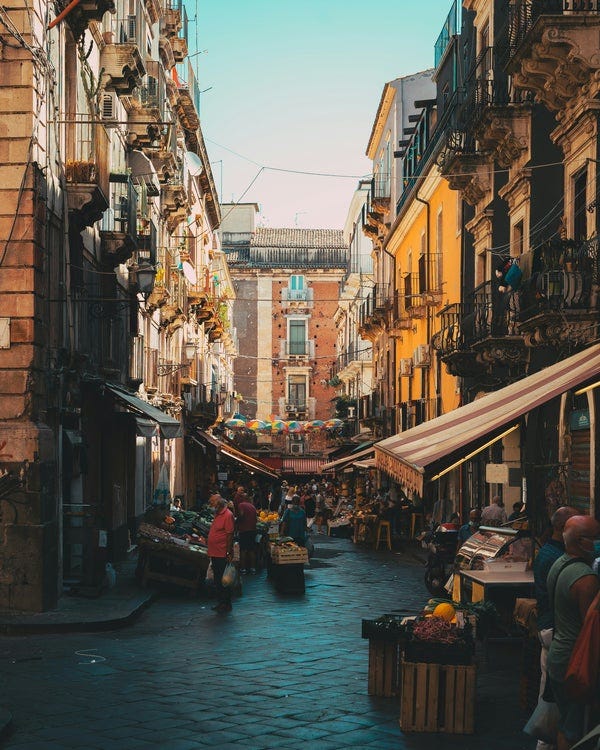
Top Highlights of Catania
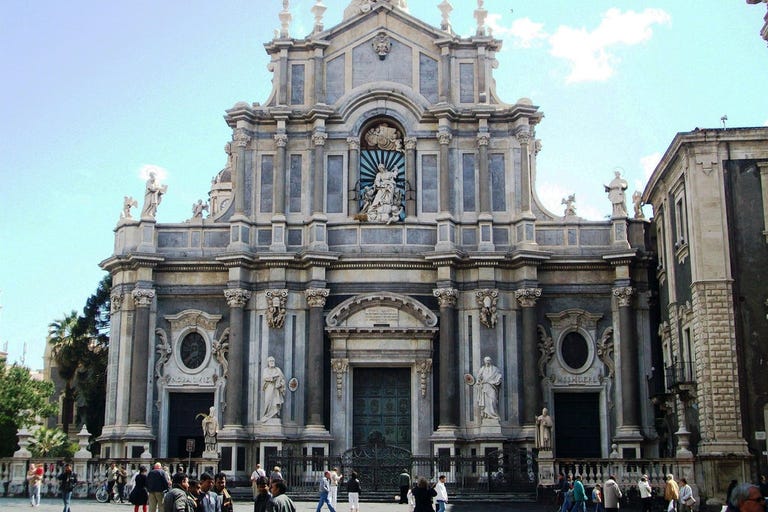
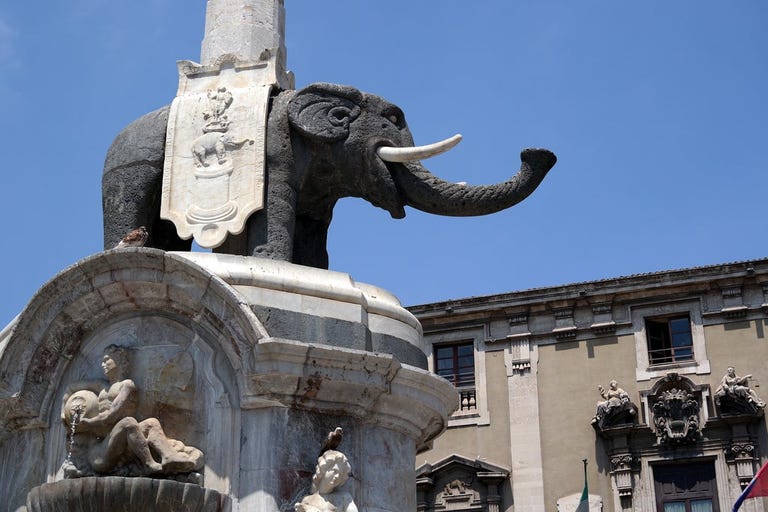
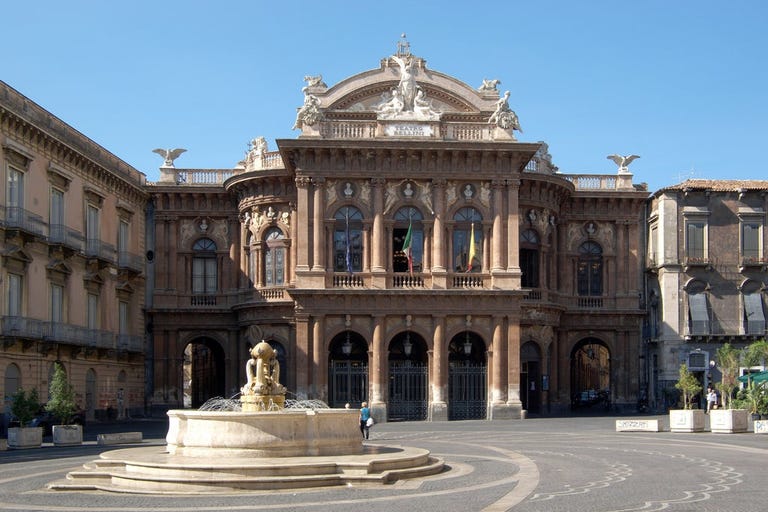
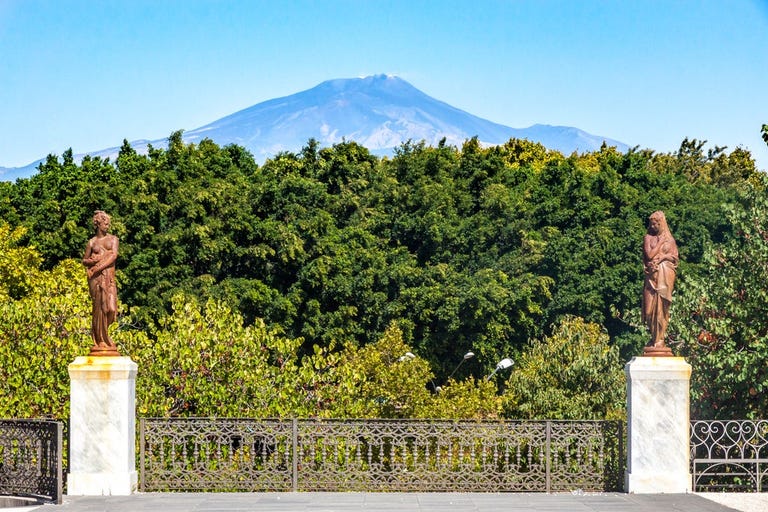
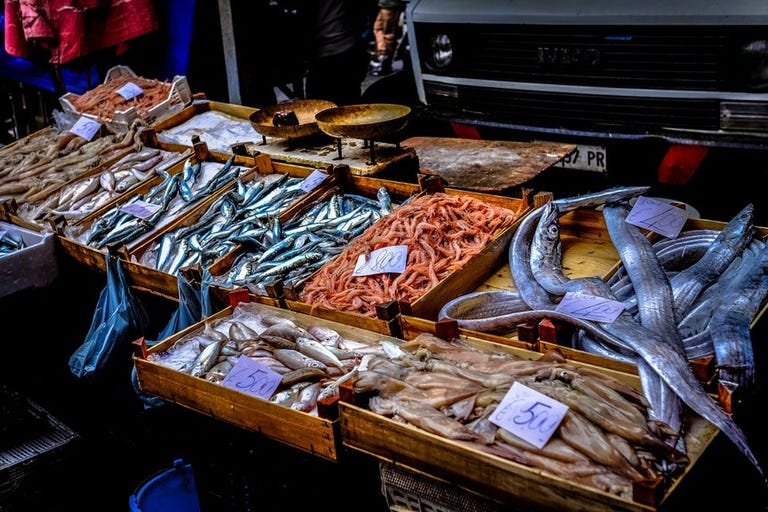
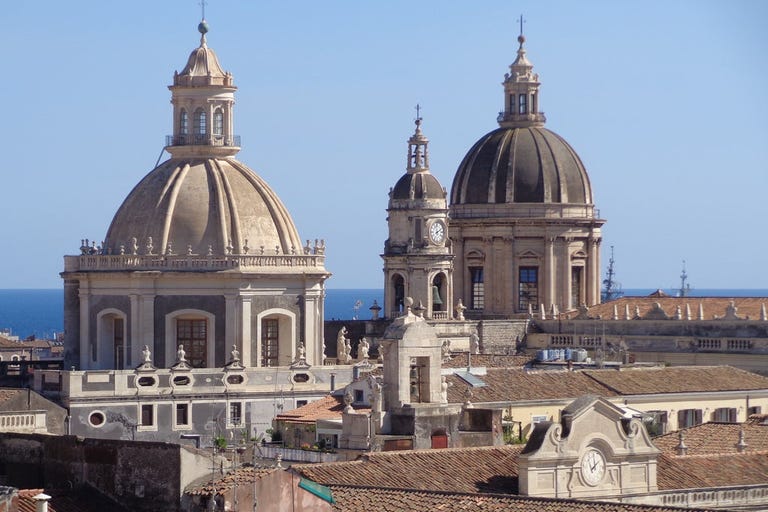
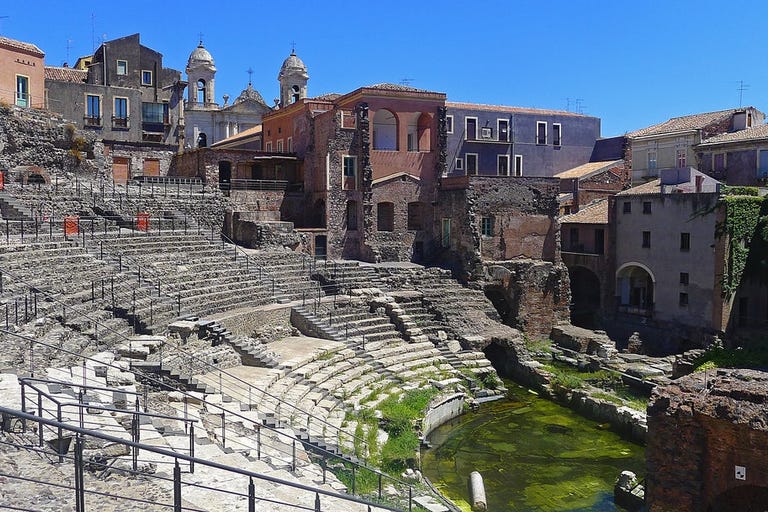
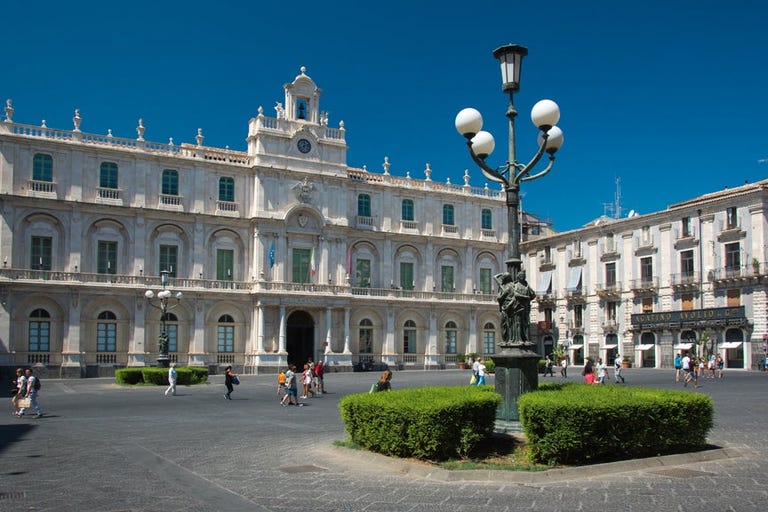
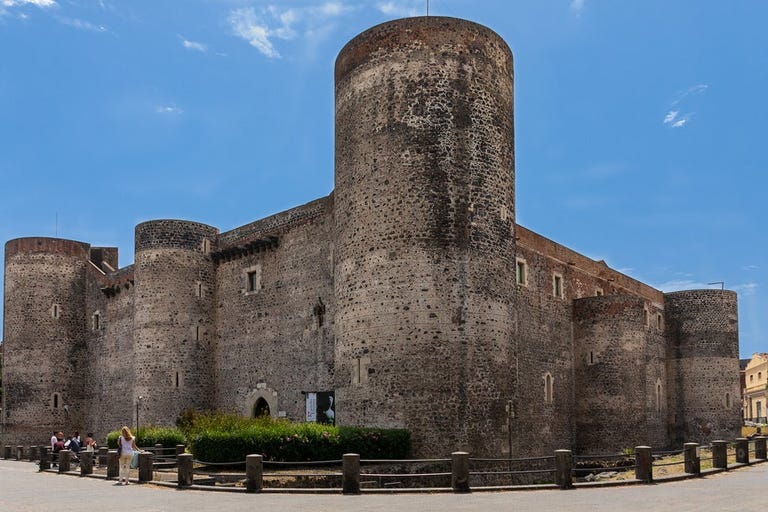
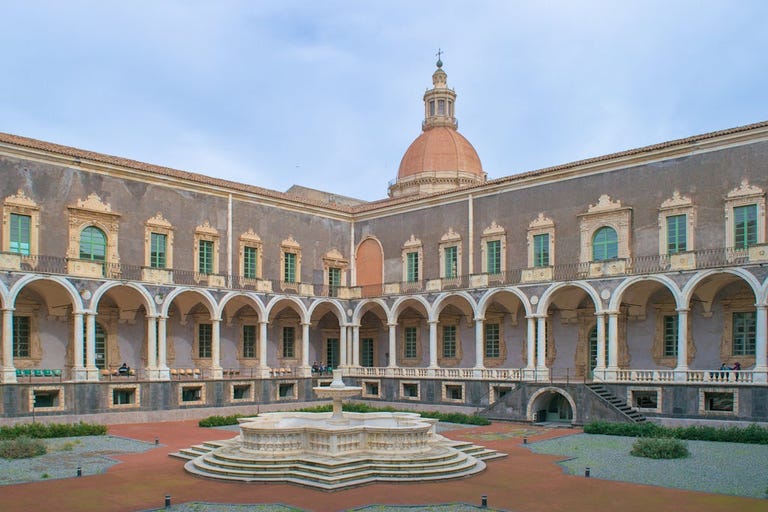
Travel Information
Best time to visit
The best time to visit Catania is during spring (April - June) and September and October. The weather is mild and perfect for exploring the city as well as outdoor activities. The busiest and hottest months for Catania are August, followed by July.
How to get to Catania
By Plane
Catania has its own airport, Catania Fontanarossa Airport (CTA), which is well-connected to major European cities. Situated just 7 km south of downtown Catania, the airport allows for an easy transit to the city center. Opt for the Alibus No. 475 to reach Catania in about 20 minutes for a mere 4 Euros. By taxi, or transfer it takes around 10-15 min.
By Train
For those who aren't in a rush and appreciate scenic journeys, taking the train to Catania presents a picturesque travel choice. The city's main railway station, Catania Centrale, is well-connected to major Italian cities, including Rome, Naples, and Milan. Also, you can reach Palermo from Catania by train within 4 hours.
By Car
In general, renting a car is a great option to experience Sicily fully. Catania is well-connected to the rest of the island via highways. The A18/E45 motorway connects Catania to Messina, while the A19 extends to Palermo.
However, parking in Catania's city center can be tricky. It's best to opt for parking on the outskirts of the city or find a hotel with parking. Explore the town itself on foot.
Fancy a roadtrip?
Be inspired by our hand-picked road trips.
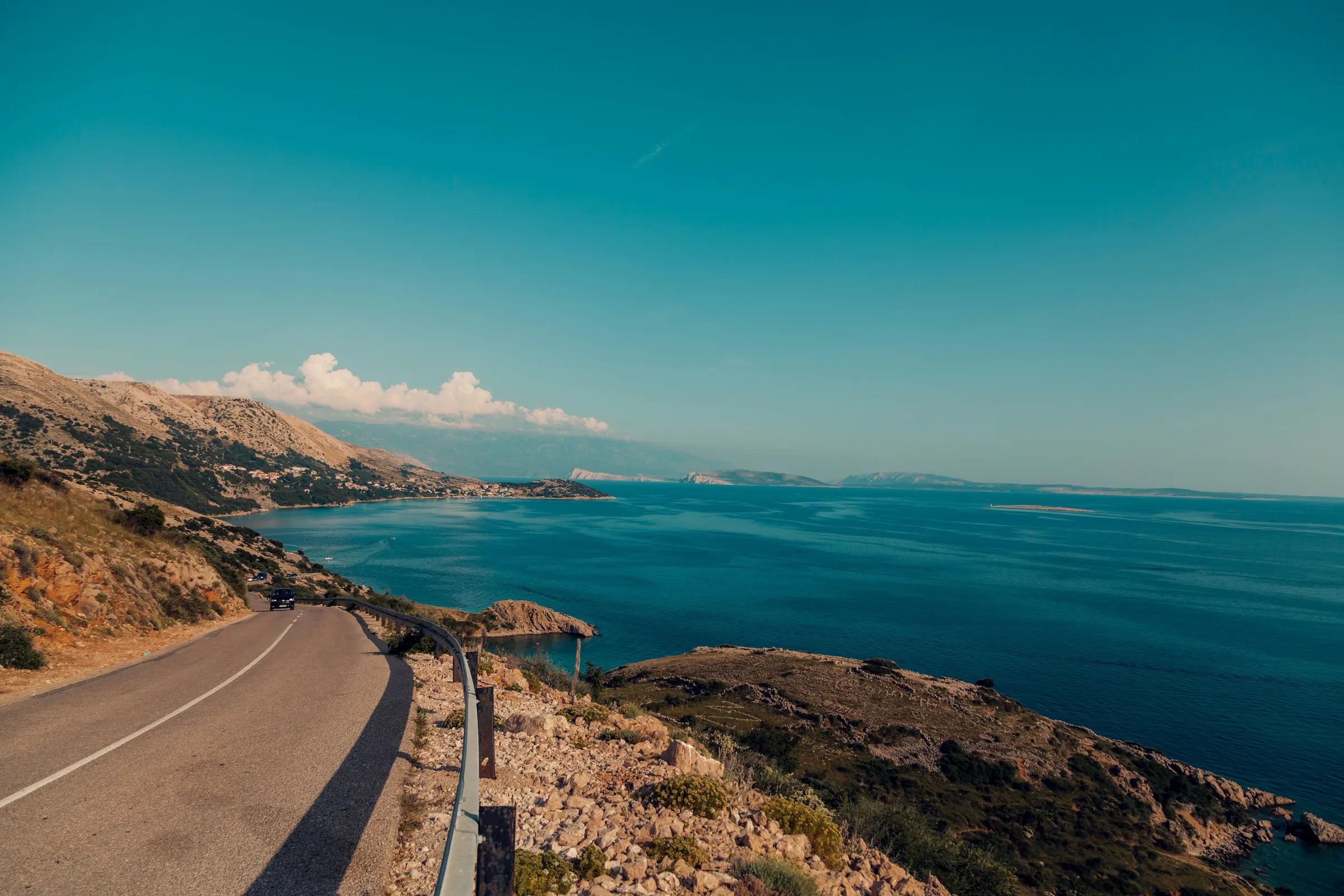
Local Specialties
What to Drink
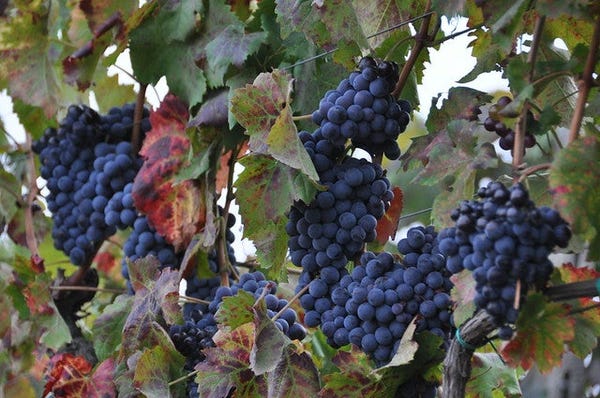
- Etna DOC: Celebrated for its unique volcanic terroir, Etna DOC wines are made from Nerello Mascalese (red) and Carricante (white) grapes, offering a mineral-rich taste with bright acidity. The taste reminds some of Barolo and Pinot Noir.
- Cerasuolo di Vittoria DOCG: Sicily's sole DOCG wine thrives in the island's southern parts. It produces elegant reds with a harmonious balance of fruit and minerality.
- Etna Rosso: Known for its deep berry, herbal, and mineral flavors with subtle tannins and higher acidity, this red wine pairs beautifully with rich tomato-based dishes. The wine is produced to the North, East and South of Mount Etna and is primarily made from Nerello Mascalese. It can also contain up to 20% of Nerello Cappuccio.
- Etna Bianco: Predominantly crafted from Carricante, these wines burst with citrus, and fruity notes with a herbal touch. With their refreshing acidity, they embody the essence of Sicilian white wines. The wine is a perfect choice for seafood dishes.
The Nerello Mascalese grape variety is native to the slopes of Mount Etna and produces wines with rich flavor, featuring a spectrum of aromas from fruits to volcanic earth.
What to Eat
Sicilian food will surprise you with its combination of Italian and Oriental flavors.
- Pasta alla Norma: Catania's signature dish is named after Vincenzo Bellini's famous opera. It features a savory tomato sauce, fried or roasted eggplants, grated salted ricotta, and basil.
- Arancini al ragù: This conical-shaped Arancini version is popular in eastern Sicily and symbolizes fiery Mount Etna. The rice balls are stuffed with ragù of ground beef, tomatoes, and cheese.
- Horse Meat and Meatballs: A daring yet traditional choice, these succulent meatballs and sausages offer a seldom experience.
- Caponata: The popular dish comes in over 30 different versions. It's a delicious medley of eggplant, tomatoes, olives, and capers, seasoned with vinegar and sugar for a delicately piquant taste.
- Granita - The Original Sicilian Slushy: The typical Sicilian breakfast, is a must-try for its unique texture and refreshing flavors, perfect for cooling down under the Sicilian sun. It comes in various flavors like lemon, almond, and pistachio, often enjoyed with a brioche col tuppo. Fun fact: originally Granita was made with snow from Mount Etna :)
- Olivette di Sant'Agata: These sweet treats made to honor Saint Agatha, are shaped like olives and made from almond paste, sugar-coated and colored green.
- Iris from Catania: The typical Sicilian sweet originated in Palermo, but can be found throughout the island. It's a soft, fried dough filled with cream or chocolate cream, enjoyed best with a cup of coffee.
History
Catania, the second-largest city in Sicily, boasts a rich heritage of history, culture, and architecture. Founded in the 729 BC by Chalcidian Greeks, Catania has been a witness to numerous historical events and natural disasters that have shaped its identity. Throughout its early years, Catania was a battleground for influence between the Greeks and the Carthaginians, later falling under Roman rule in 263 BC, which heralded a period of growth and prosperity. St. Agatha of Sicily, a virgin martyr was born in Catania around 231 AD and died in 251 AD. She is the patron saint of breast cancer patients, rape victims, and those suffering, highlighting her role as a beacon of hope. She is also invoked against fire, earthquakes, and volcanic eruptions. Her feast is on 5th of February.
Situated at the foot of Mount Etna, Europe's highest and most active volcano, Catania's resilience has been tested time and again by natural disasters. It was almost obliterated by a catastrophic earthquake in 1169, only to face further devastation from Mount Etna's eruption in 1669 and the destructive earthquake of 1693 Yet, each time, Catania rose from the ashes, rebuilding itself with the distinctive Baroque architecture that we see today and that has earned the city the UNESCO World Heritage status.
The Renaissance period saw Catania flourish as a cultural, artistic, and political hub in Italy, home to Sicily's first university founded in 1434. This era brought to Catania a renaissance of its own, attracting artists, writers, and composers who would leave an indelible mark on its cultural landscape.
Despite the challenges posed by nature and history, Catania has emerged as a vibrant, lively city. Its historical sites, from the ancient Greek-Roman theatre to the bustling fish market at the Piazza del Duomo, offer a fascinating glimpse into a past that continues to shape the city's identity today.



